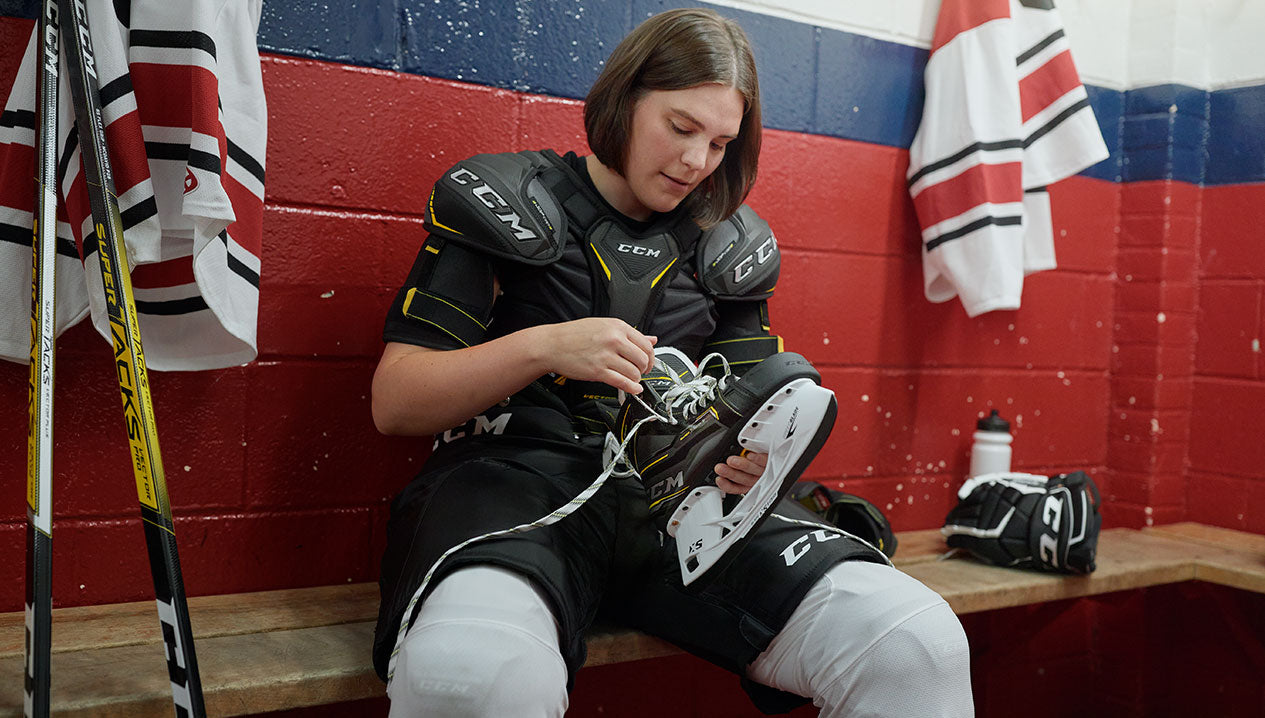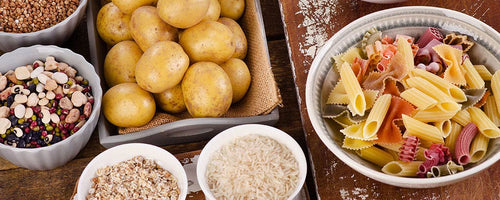Nutrition for Outdoor Winter Sports

But before we get into the obstacles seen during winter activities, we should review the nutrition and hydration core principles that apply to sports and activities practiced in all four seasons.
Activities lasting less than 1 hour
In general, a balanced diet consisting of all 4 food groups should be able to provide you with the right amount of energy to power through your activity as well as enough protein for recovery. As for hydration, drinking water is all you need to quench your thirst. Sports drinks are not always needed as you do not lose large amounts of electrolytes in the span of one hour. The only time the recommendations would be different is if you are competing in a short duration sport, like alpine skiing, where performance counts. In this case, a customized meal plan prepared by a registered dietitian would be recommended.
Activities lasting 1 hour or more
Because we spend a lot of energy and lose a substantial amount of water and electrolytes when our activities last 1 hour or more, we must make sure to fuel our bodies properly to perform at our highest level and to recover in a timely manner. This means you must consume the right foods and liquids at the right time. The table below summarizes these recommendations.
What to Eat & Drink Before The Event
2-4 hours before your event
- Low-fat, high-carbohydrate and moderate-protein meal with at least 500 ml of fluid (water, juice, milk, etc.). Ex.: Oatmeal, yogurt and fruit.
1-1.5 hours before your event
- Carbohydrate-rich snack with 250-500 ml of fluidEx.: Fruit or a low-fat muffin or a bagel.
What to Eat & Drink During the Event
Every 15-20 minutes during the activity
30-60 grams of carbohydrate and at least 500 ml of fluids (but often more) for every hour of sustained activity.
- Each of the following foods provide 30 grams of carbohydrate: 1-2 pieces of fruit, 1 cup of chocolate milk, 4-6 crackers, 1 high carbohydrate sport bar, 500 ml of sport drink, 1 sport gel.
What to Eat & Drink After the Event
Within 30 minutes after the activity, and again 1-2 hours after
- Low-fat, high-carbohydrate and moderate-protein meal with at least 500 ml of fluid (water, juice, milk, etc.). Ex.: Oatmeal, yogurt and fruit.
- Some more examples are:
- Chocolate milk, granola bar, apple and water
- Protein bar, orange, pretzels and juice or water
- Whole wheat pasta with meatballs, vegetable salad, milk/juice/water
The bottom line here is that carbohydrates should be your priority before, during, and after your exercise as they provide you with the fuel you need to power through long activities and help you recover. There should also be some source of protein to help your muscles rebuild.
What is Unique About Winter Sports?
Although not all winter sports are the same as they vary due to different physical environments, exercise intensity and activity duration, 3 main issues that are unique to winter sports are:
- Cold temperatures, which may reduce appetite and thirst as well as increase the amount of wasted energy through shivering
- High altitude that leads to increased fluid loss and iron requirements
- Location of training and competition, which can limit access to food, fluid and restrooms
Exercising in Cold Temperatures
First of all, we tend to lose more water because of the low humidity environment, increased rate of breathing (there is water in our breath!) and increased sweating underneath all our warm clothing. This is why breathable clothing is key in this type of weather!
Furthermore, extreme temperatures may suppress our appetite and thirst signals, making it easy for an athlete to forget to properly fuel.
Finally, when exposed to cold temperatures for some time, our body temperature begins to go down, which triggers our shivering reflex. When we shiver, we use up the glycogen (stored glucose) in our muscles, which makes an athlete more prone to fatigue.
Briefly, if an athlete does not replenish their energy and fluid losses, skill performance will be negatively affected.

Training at High Altitude
Although there are physiological benefits of training at high altitude, nutritional issues also arise. First, exposure to high altitude results in an increased use of blood glucose rather than fat as an energy source during exercise and at rest. With suboptimal blood sugar, an athlete may lose mental and physical focus.
Furthermore, acclimatization to altitude leads to a reduction in total body water and increased fluid loss due to faster breathing in the cold and dry air, both of which put someone at risk for dehydration.
Finally, iron requirements are higher when training at high altitude. When oxygen in the air is low at high elevation, the body adapts and produces more red blood cells to increase oxygen circulation in the body. However, because red blood cells contain iron, more red blood cells means more iron is needed. Consequently, an athlete who has low iron stores to begin with will likely suffer from greater fatigue and inadequate recovery.
Location of Training and Competition
There is sometimes a 2-3 hour time lag before you can get back to the hotel/cafeteria for a meal. Going without food for this long will definitely decrease performance and endurance.
So what can we do to ensure we are adequately fueled and hydrated?
Fueling Up
To maximize performance and prevent physical and mental fatigue for those exercising at least 1 hour:
Bring carbohydrate-rich snacks that are resistant to cold temperature, easy to digest, and can be handled with gloves. Ex.: crackers and cheese, oatmeal cookies, pretzels, dried fruit, dry cereal, trail mix, granola bars, and peanut butter and jelly sandwiches;
Use unbreakable, easy-to-open containers. Ex.: zippered or unsealed sandwich bags, and rubber containers;
Take a few bites of a carbohydrate-rich snack after each run to maintain blood sugar and glycogen levels.
Hydration Please
To ensure optimal hydration:
- Wear or carry a water bottle on a belt or in a backpack
- Carry a water bottle in a bag during training, which can be left at the top or bottom of the hill
- Wrap bottles in clothing to keep them off the ground to prevent freezing
- Pack warm beverages or soups in insulated containers
- Use non-breakable bottles that can be opened without having to remove gloves
Note: The information included is based on the best available evidence at the time and may not be applicable for everyone. Please consult your local dietitian to get personalized advice.
Sources:
College of Public Health and Human Sciences. (n.d.). Retrieved September 1, 2015.
L. Meyer, N., M. Manore, M., & Helle, C. (2011). Nutrition for winter sports. Journal of Sports Nutrition, 29(1).
Position of the American Dietetic Association, Dietitians of Canada, and the American College of Sports Medicine: Nutrition and Athletic Performance. (2009). Journal of the American Dietetic Association, 509-527.
Rosenbloom, C. (2012). Sports nutrition a practice manual for professionals. (5th ed.). Chicago, Ill.: Academy of Nutrition and Dietetics.
Ryan, M. (2005). Performance nutrition for winter sports. Boulder, Colo.: Peak Sports Press.

Zeina is a registered dietitian-nutritionist and is part of l’Ordre professionnel des diététistes du Québec. She currently works at Le Fitness Loft Kinesiology Clinic in Dorval where she consults an active clientele that desires to change their lifestyle habits, whether it is to lose weight, increase muscle mass, improve performance or simply live healthier. Zeina has a passion for teaching and conveying her knowledge about overall healthy eating habits and makes sure every client receives personalized recommendations based on their lifestyle and preferences.
Join Source Nation to get the latest news on product launches, Source Exclusive product lines, tips and tricks for parents and players, and more!



